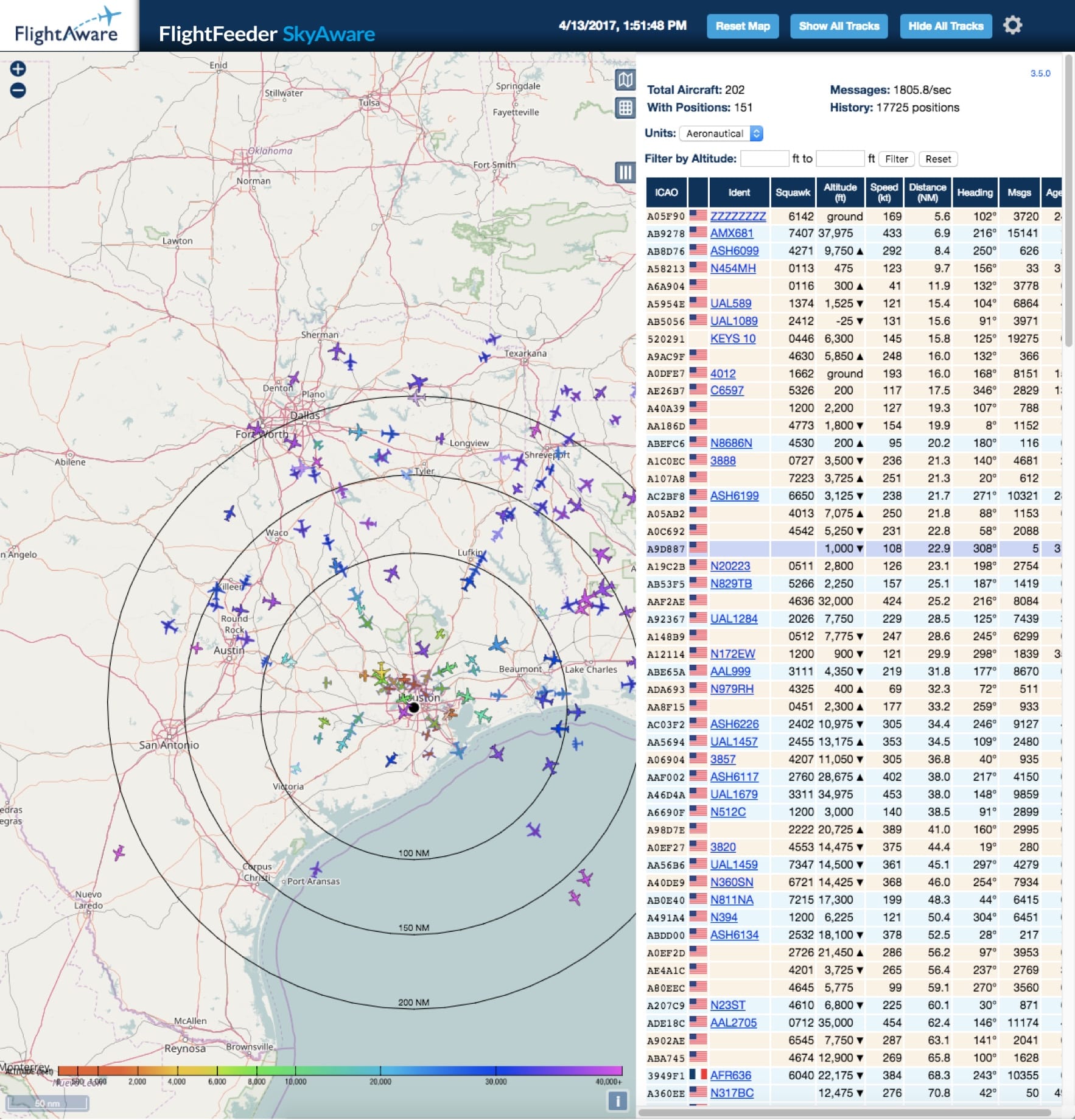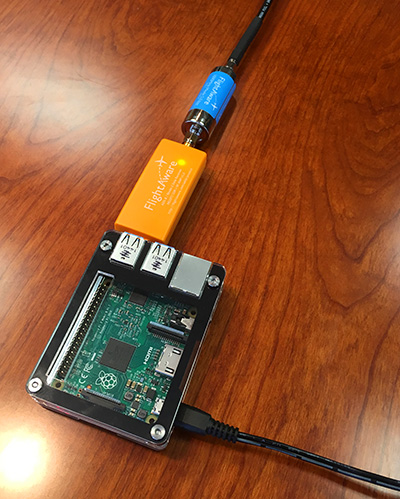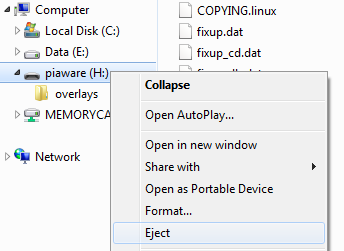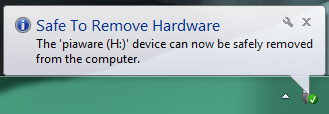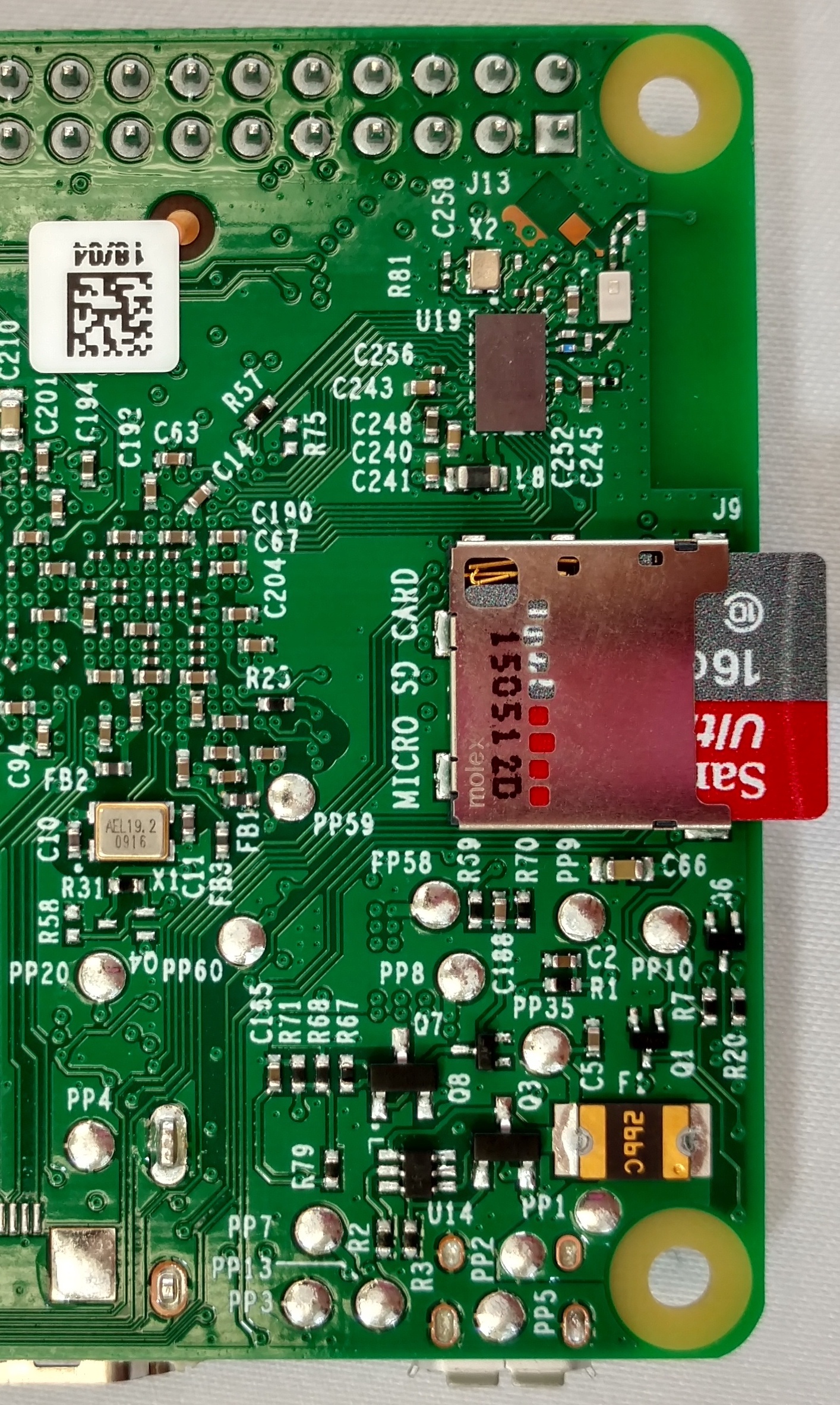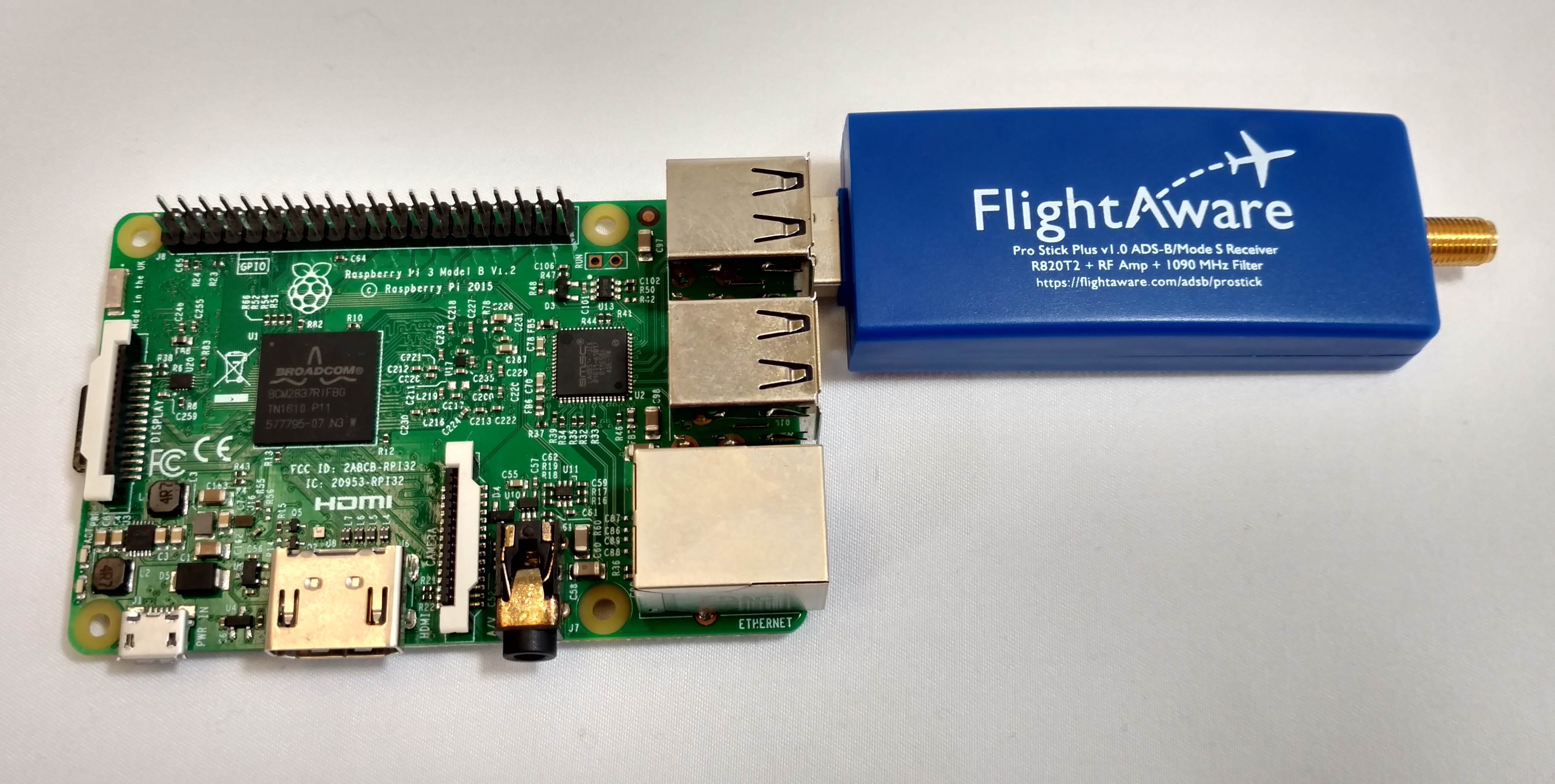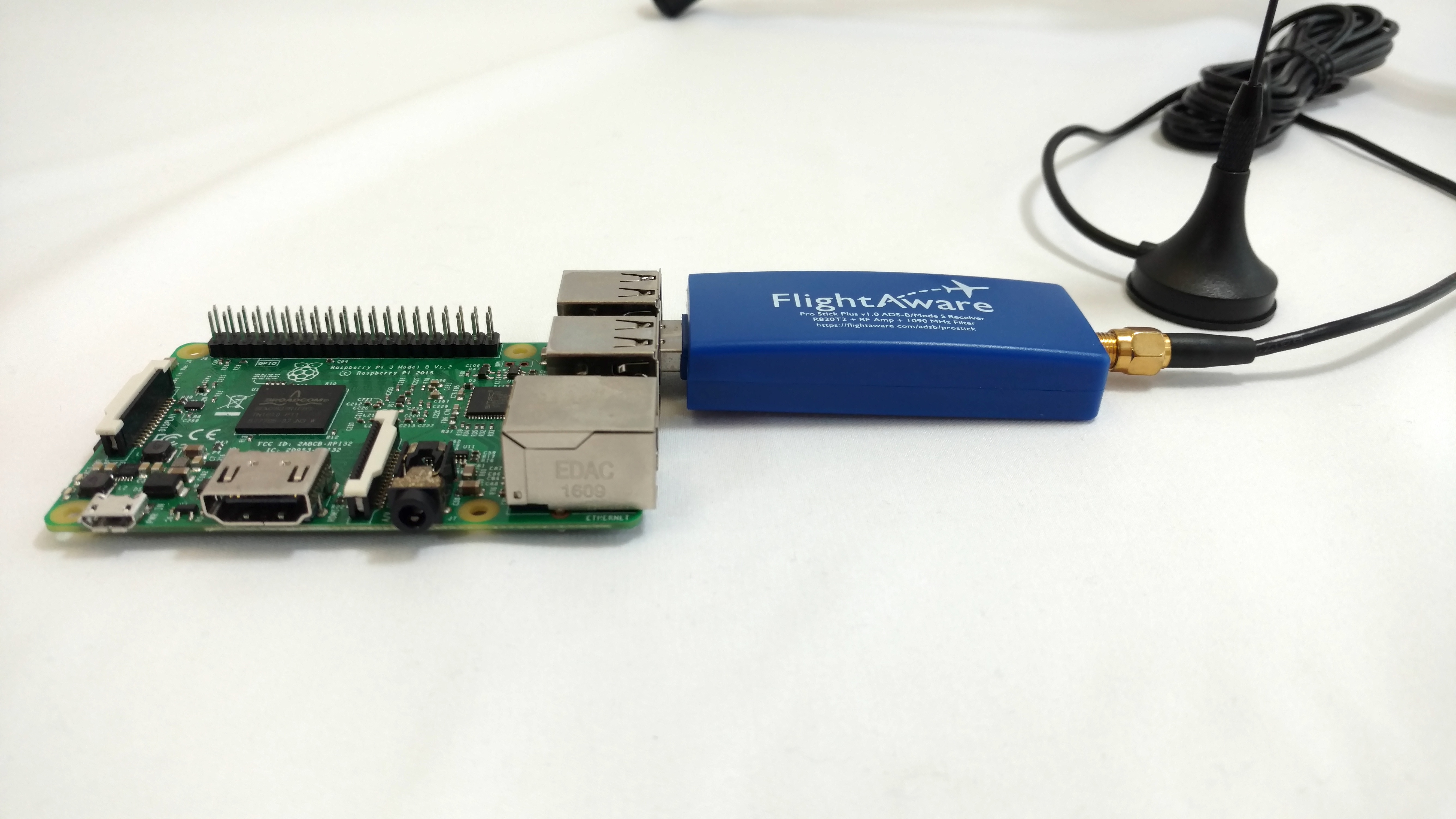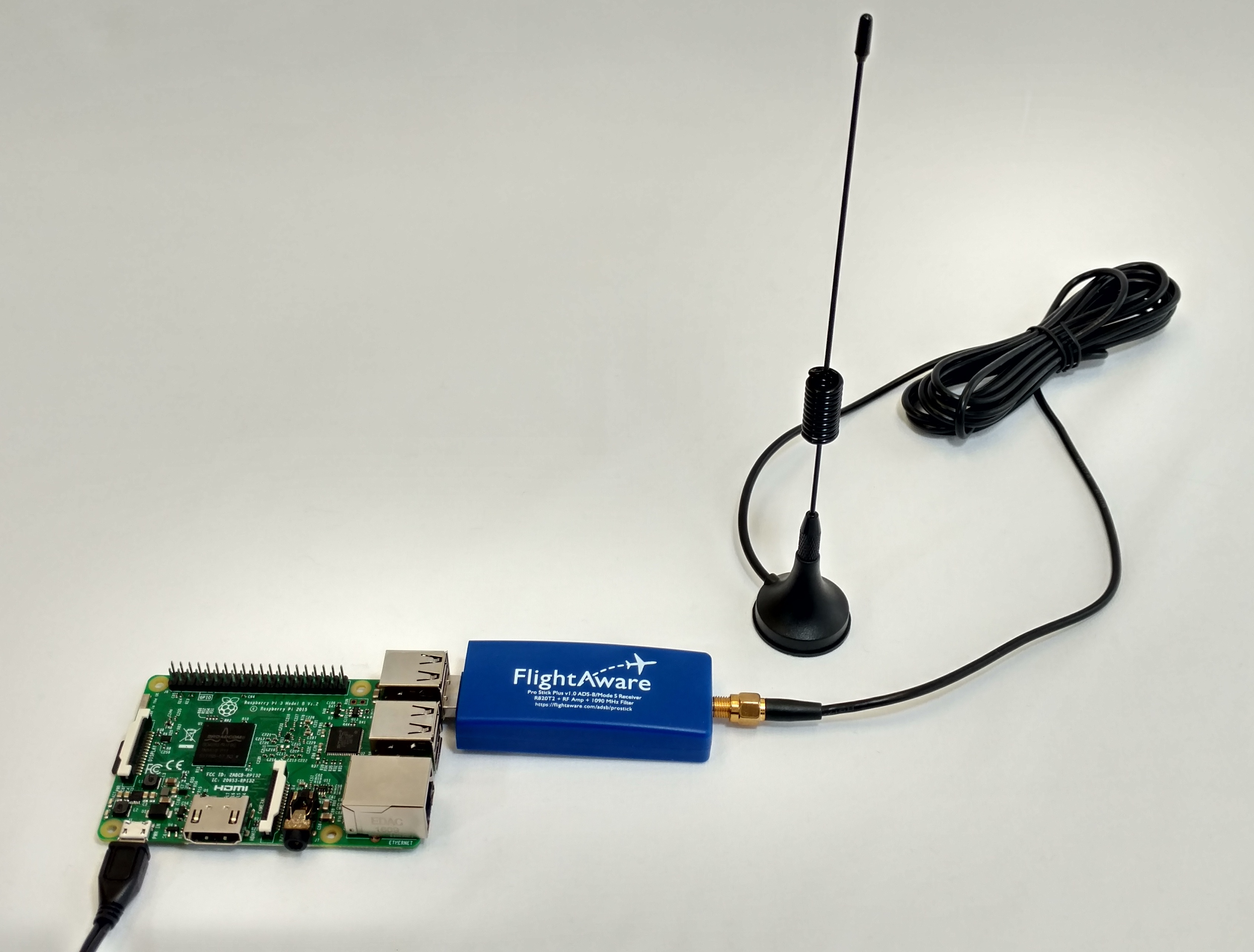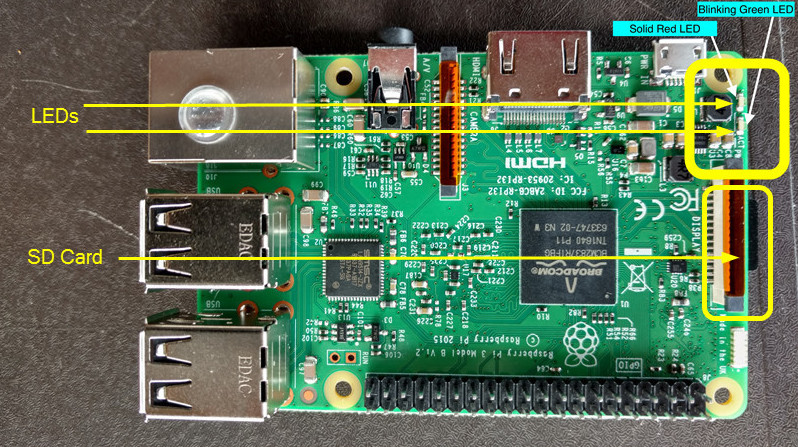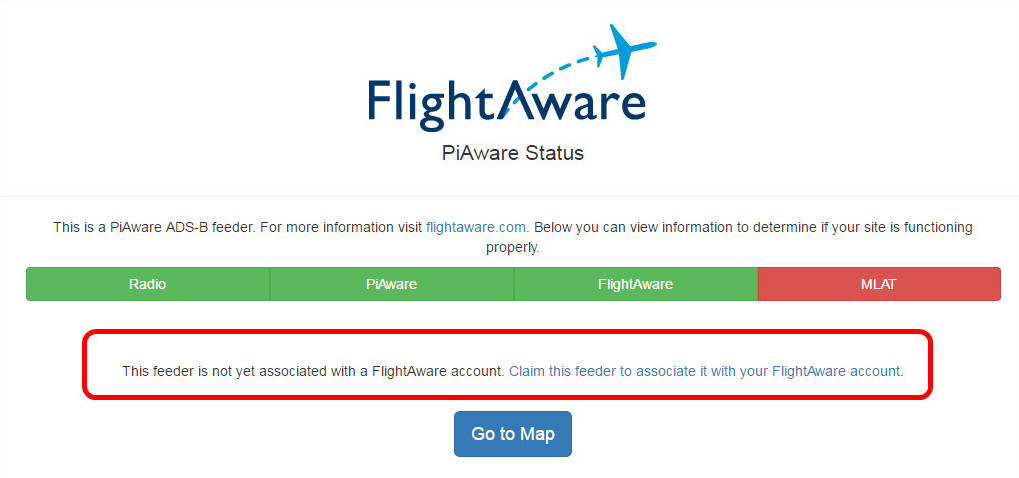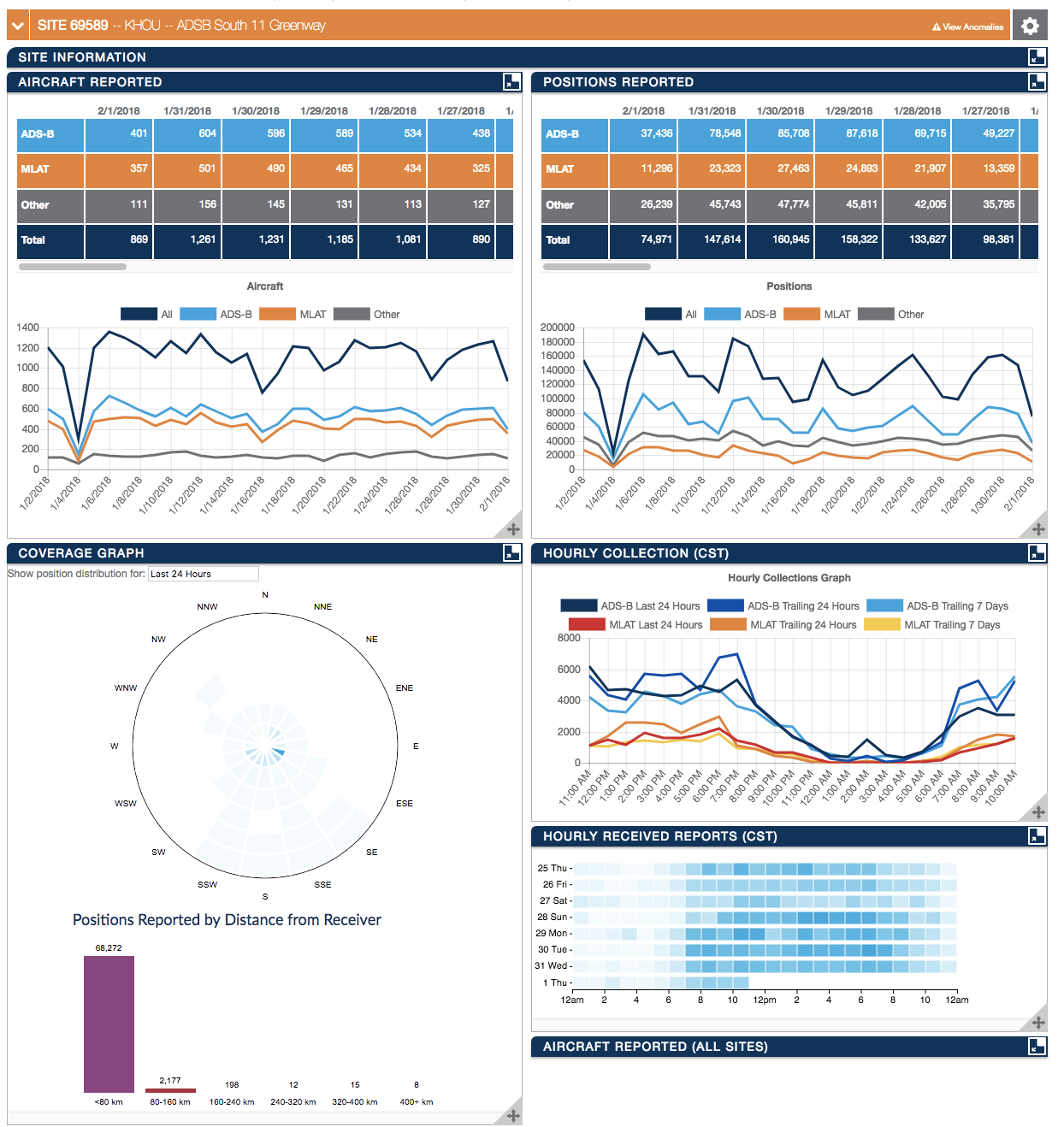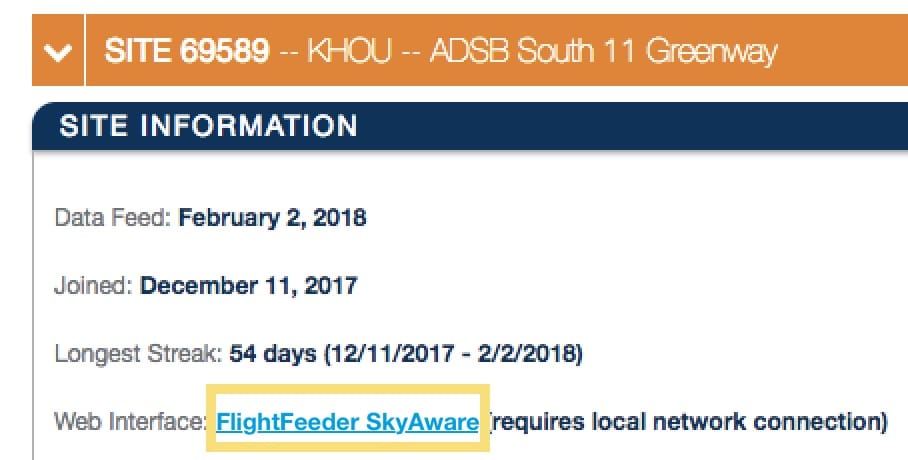Option 1: Via Bluetooth
For PiAware 7.0 or later and a supported browser, you can set up your PiAware via Bluetooth.
Supported web browsers: Google Chrome, Opera, Microsoft Edge, Chrome for Android.
Sorry, Bluetooth configuration is not supported by this browser. Supported browsers currently include: Google Chrome, Google Chrome on Android, Opera, and Microsoft Edge
Set up via Bluetooth
Option 2: Manual Configuration
If on board Wi-Fi or a USB adapter will be used to connect to the internet you will need to edit the configuration file. Etcher will automatically eject the Micro SD card after formatting, physically remove the Micro SD card or USB adapter and plug it back into the computer to edit the configuration file.
The configuration file allows the user to configure and set the following
- Wired network
- Wireless (WiFi) network
- PiAware supports unencrypted networks or WPA/WPA2 encrypted networks; WEP is not supported
- Automatic or manual updates*
- Multilateration (MLAT) output*
- Receiver type (RTL-SDR, Beast, Radarcape or other Mode S/ADS-B source)
- RTL-SDR gain, PPM and device index
* indicates a setting that can be configured on the site's statistics page.
For full configuration options see advanced configuration
Configuration File Format
The configuration file is a simple plain text format file. The TextEdit program on a MAC OS is known for saving in the rich text format and smart quotes so be sure those options are disabled in the program's preferences.
Lines beginning with a “#” are comment lines and are ignored. Blank lines are also ignored. All other lines specify configuration settings.
Windows
- Open the Explorer program
- Select the Micro SD card device labeled piaware
- Open the file labeled piaware-config.txt
- The file will open in Notepad
Mac OS X
- Open the Finder program
- Select the Micro SD card device labeled piaware
- Open the file labeled piaware-config.txt
- The file will open in TextEdit
Below is the text file opened, instructions to enable Wi-Fi are in BOLD.
#
# This file configures the Piaware sdcard image
# configuration. Whenever the system boots, this
# file is read and its contents are used to
# configure the system.
#
# Lines beginning with a '#' are comment lines
# and are ignored. Blank lines are also ignored.
# All other lines specify configuration settings.
#
#
# WIRED NETWORK CONFIGURATION
#
# Should piaware use the wired ethernet port
# for network access?
wired-network yes
# Wired network configuration:
# Most networks will use DHCP
wired-type dhcp
# Alternatively, a static address configuration
# can be provided; set "wired-type" to static to use this.
wired-address 192.168.1.10
wired-netmask 255.255.255.0
wired-broadcast 192.168.1.255
wired-gateway 192.168.1.254
wired-nameservers 8.8.8.8 8.8.4.4
#
# WIRELESS NETWORK CONFIGURATION
#
# Should piaware use a wifi adaptor
# for network access? You will need to attach
# a supported USB wifi adaptor for this to work.
# change this to "yes" to enable wifi
wireless-network yes
# Wifi SSID and password.
# This should be changed to match your wireless
# network SSID and, for networks that require
# a passphrase, the passphrase.
wireless-ssid MyWifiNetwork <-----replace MyWifiNetwork with the name of your WiFi (aka the SSID of your local network)
wireless-password s3cr3t <-----replace s3cr3t with the password to your WiFi
# Wifi network configuration:
# Most networks will use DHCP
wireless-type dhcp
# Alternatively, a static address configuration
# can be provided; set "wireless-type" to static to use this.
wireless-address 192.168.1.10
wireless-netmask 255.255.255.0
wireless-broadcast 192.168.1.255
wireless-gateway 192.168.1.254
wireless-nameservers 8.8.8.8 8.8.4.4
Windows
- Once the file has been edited save and close Notepad
- Eject the Micro SD card either in My Computer by right clicking and selecting Eject or in the system tray.
- A pop-up should appear stating it is OK to remove the SD card
Mac OS X
- Once the file has been edited save and close TextEdit
- Eject the Micro SD card either in Finder or using the eject icon
